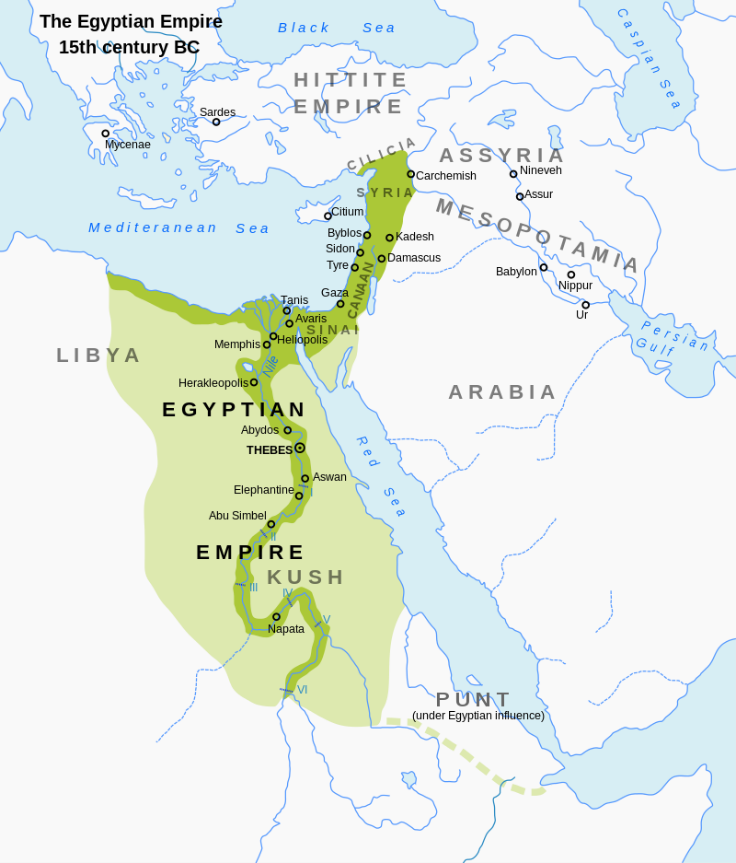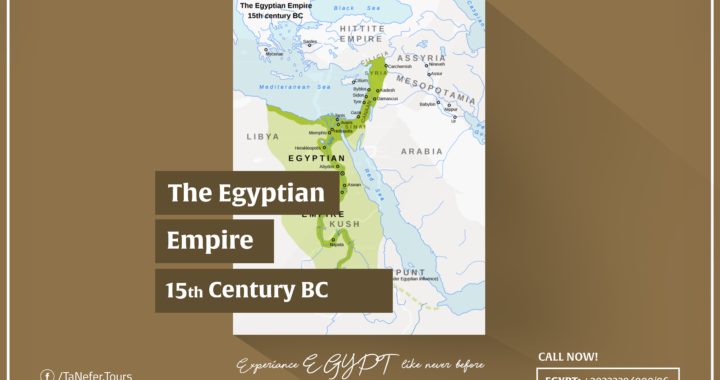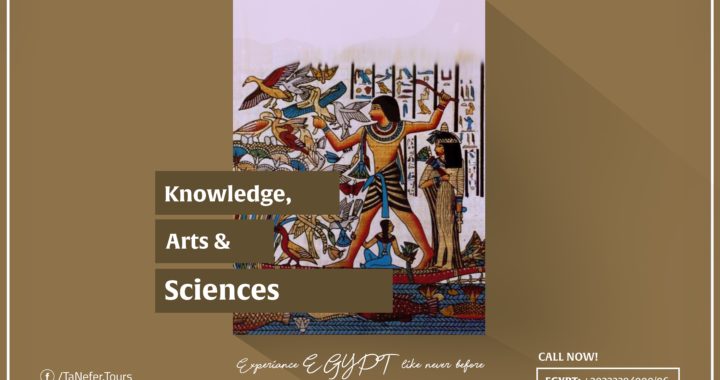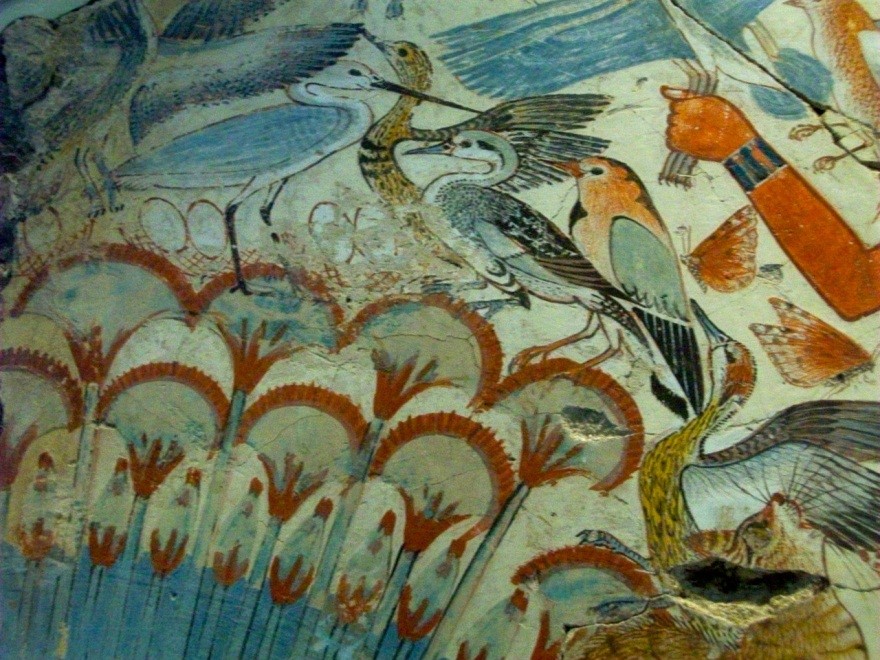Egyptian Empire
Ancient Egyptian adventurers and travelers reached as far as Australia, as West as Scotland and as South Africa.
New Kingdom pharaohs established a period of unprecedented prosperity by securing their borders and strengthening diplomatic ties with their neighbors, including the Mitanni Empire, Assyria, and Canaan. Military campaigns waged under Tuthmosis I and his grandson Tuthmosis III extended the influence of the pharaohs to the largest empire Egypt had ever seen.
Between their reigns, Queen Hatshepsut generally promoted peace and restored trade routes lost during the Hyksos occupation, as well as expanding to new regions. When Tuthmosis III died in 1425 BC, Egypt had an empire extending from Niya in north-west Syria to the fourth waterfall of the Nile in Nubia, cementing loyalties and opening access to critical imports such as bronze and wood.




